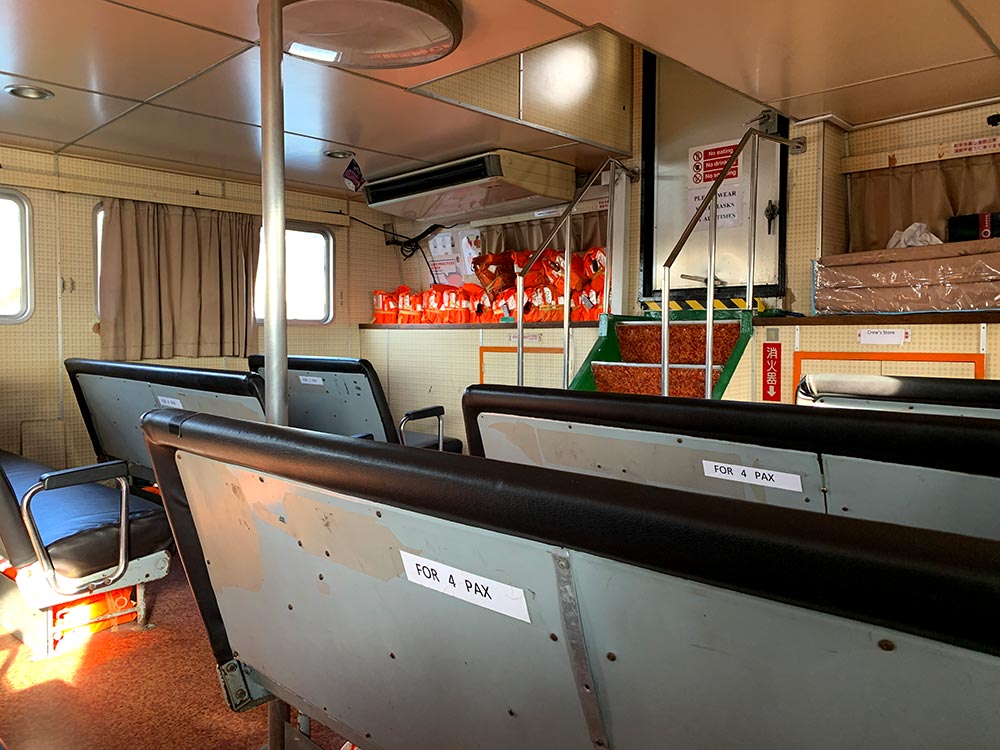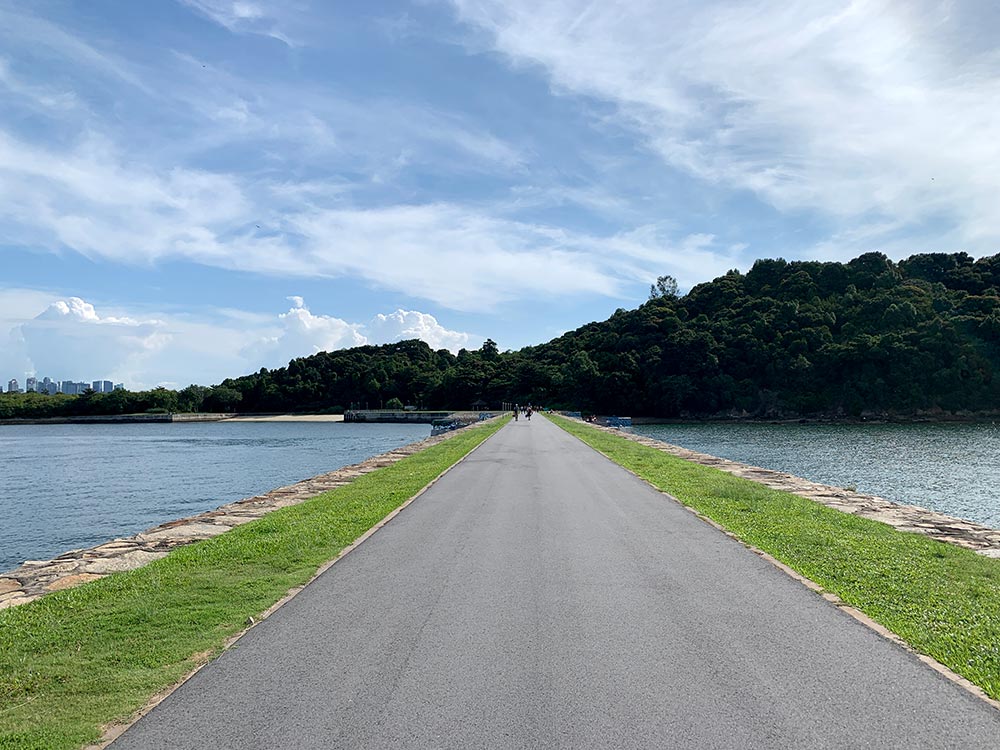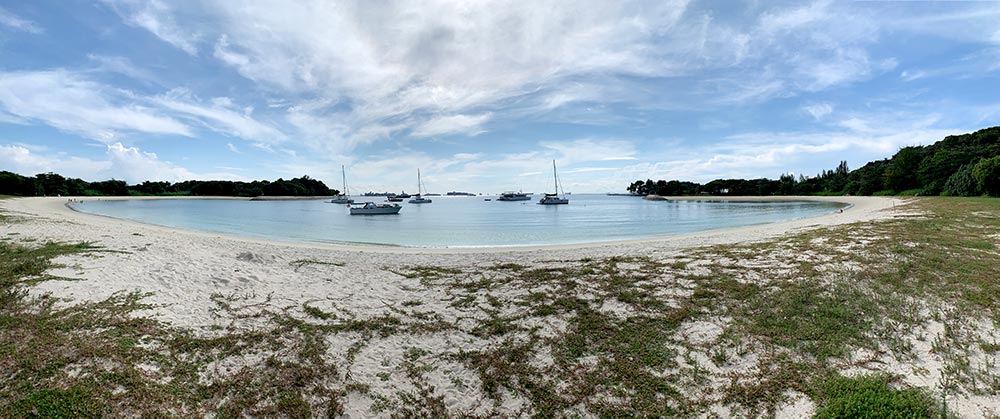If you need a unravel from the regular tourist sights or want to escape from the tall buildings and fast-paced municipality life for a bit, why not trammels out some of Singapore‘s most popular Southern Islands – St John’s Island, Lazarus Island and Kusu Island can be hands visited in a single day. Here’s how you can plan a Southern Island day trip plane as a solo traveller.

Looking for other offshore islands in Singapore to visit? Why not trammels out the nature reserve and quarries on Pulau Ubin in the north or do an intertidal walk or go scuba diving off Pulau Hantu?
About the Singapore Southern Islands
What’s surprising to a lot of visitors is that Singapore is just one in an archipelago of over 60 islands – most of these offshore islands are located in the south, with the most famous one stuff Sentosa Island which is a tourist favourite with the Integrated Resort, Universal Studios and lots of activities – you can hands get to Sentosa by bus, monorail, subscription car or plane on foot.
The other Southern Islands you can visit are tabbed the St John’s Island Complex, which consists of St John’s Island, Lazarus Island, Seringat Island and Kias Island which have been combined through land reclamation. The other island that can be visited is Kusu Island just a short loftiness away.
Pulau Tekukor is a small uninhabited island between Sentosa and St John’s Island. It was formerly an trajectile dump and currently sealed to public.
Sisters’ Islands are two islands to the west of St John’s Island that have been designated Singapore’s first marine park. The smaller of the islands is sealed for conservation, while the larger one is usually open, it’s moreover undergoing works right now and only slated to reopen virtually 2024. There is a turtle hatchery here, and Singapore’s first underwater swoop trail for scuba divers.
How to get to Singapore Southern Islands
The cheapest way to visit Singapore’s Southern Islands is to hop on a ferry from Marina South Ferry Terminal which is conveniently located on the North-South MRT Line (NS28). There is some parking at the ferry terminal if you are driving.
A round-trip ferry ticket for the Southern Islands financing S$15 for an adult. The usual ferry route is a loop from Marina South to St John’s Island, then to Kusu Island, and when to Marina South. Sometimes there are special uncontrived routes to and from St John’s or Kusu Island during the holiday season.



You can get ferry tickets either directly from Singapore Islands Cruises or Marina South Ferries, or buy through aggregators like Klook: Singapore Island Cruises or Marina South Ferries [affiliate links] which sometimes offer discounts or packages that include supplies or rainbow tea coupons. You can moreover buy tickets on site at the ferry terminal, but I highly recommend getting your tickets online if you plan to visit on the weekends when it tends to be crowded.
Getting virtually the islands
In unstipulated the islands are pretty small and very walkable as long as you have decent shoes. Mostly unappetizing as well except for shit of St John’s Island where you might have a few upslopes, but nothing crazy.
You can bring withal your bicycle on the ferry for self-ruling if you want to explore St John’s and Lazarus Island increasingly quickly. There was a velocipede rental kiosk (GoGreen Southern Island Bicycle Rental) in 2021 which I used when I first visited St John’s Island, but unfortunately it doesn’t seem to be operating anymore as of 2022. You don’t really need a bicycle to get virtually to be honest, but it will speed up exploration expressly in shit where it’s mostly forest and not much else.
St John’s Island
I visited St John’s Island twice – the first was on my own but unfortunately I got rained out in the afternoon so I didn’t get to explore St John’s much, and the second time was on a tour with My Community Festival where an ex-resident of St John’s Island showed us virtually his old home surpassing he was relocated to the mainland.

St John’s Island formerly known as Pulau Sekijang Bendara (Red deer flag island) has had quite a colourful history – theoretically when in the day it was the first place that Sir Thomas Stamford Raffles landed at having mistaken it for mainland Singapore, though he was sooner corrected and found his way to the mainland the pursuit day.
Since then it has been used for several variegated purposes: a quarantine zone for new immigrants to prevent the spread of diseases to the main land, holding zany for Southeast Asian refugees, a recovery facility for opium addicts and plane a prison for political dissidents in the British colonial days.
There were once villages and communities on this island, and while some of the old structures have been preserved, not much is left. There is some signage but may not be a lot of historical context to x-rated structures if you wander virtually on your own.

Arrive at the jetty
St John’s Jetty is the main landing point for St John’s and Lazarus Island via the public ferry and most boats to the island.

This simple jetty unquestionably stands on a wiring of coral. As you exit the boat, you might notice flipside derelict wooden jetty to your left – this was the original jetty.

Stroll withal the beach
If you turn right as you exit the jetty towards the northern end of the island), there is a small stretch of waterfront and a nice little cove for spooky out at. Lots of people have picnics at the benches or grass stretch withal the coast. There is a staircase next to the large St John’s Island sign leading up to a small house which theoretically used to vest to the Governor of the islands when in the day. If you come during low tide, you can do a bit of intertidal exploration here as the waters are quite shallow.


See remains of the old settlements
Follow the paved road virtually the part-way part of St John’s Island that starts from virtually the Govenor’s House, past the former holding centres and downwards the southeast where the Marine Lab is located.
St John’s and Lazarus Islands both had their own villages well-constructed with schools and other facilities. Some of these old structures have been torn down, others topside up and left in disrepair. It was nice on my walking tour to have a former resident point out things like where the island minimart used to be, or the field where they all used to play soccer in.


Somewhere in the part-way of the island is a crossroads that was one of the main meeting points for islanders when in the day. They theoretically used to undeniability this place ‘Orchard Road’ though there are no malls anywhere nearby like the very Orchard Road – they had street vendors selling snacks instead.


Interested to learn increasingly well-nigh St John’s Island from an expert? NParks conducts self-ruling guided tours on the 1st Sunday of each month. More details well-nigh the tour and how to sign up here. It’s very limited and tickets disappear extremely quickly, so set a timer for when tickets are released!
Visit the Sisters Islands Marine Park Gallery
The eastern side of St John’s Island is defended to the St John’s Island National Marine Laboratory which is Singapore’s only offshore marine research centre. Most of the grounds are sealed to public, but they do have a small gallery – Sisters’ Islands Marine Park Public Gallery that showcases Singapore’s marine biodiversity since the neighbouring Sisters’ Islands is a restricted area. It sounds pretty tomfool to trammels out but unfortunately they’ve been sealed since COVID and remain sealed to date.

Another zone that’s sealed on the east side of St John’s Island is Bendera Bay which has been fenced up. This was where the island’s school kids used to practice their swimming – they were national champions considering their training ground had natural currents! They’ve kept it sealed for conservation purposes and to largest study the rocks, coral and marine creatures found here.

Stay overnight at St John’s Island Lodge
If you’re up for a little camping, you can unquestionably stay overnight in St John’s Island Lodges. The former holding camps on the western side of the island have been turned into sleeping shelters (some with beds, others with raised platforms you need a sleeping bag for) and camping facilities, and there is a bungalow right at the pier zone that can moreover be rented for overnight stays for up to 10 pax.

Find out increasingly information well-nigh camping on St John’s Island at SLA. You will need to wield for a Temporary Occupational License (TOL) via the SLA website (you need Name, IC and contact for all participants involved) and pay a deposit. Currently only Otter (former Zany 5, needs sleeping bag) is unshut for booking – Eagle, Turtle, Dolphin are still closed.
Lazarus Island
What we think of as Lazarus Island (formerly Pulau Sekijang Pelepah) today is really made up of 3 islands that have been joined together by land reclamation: the original Lazarus Island, Kias island and Seringat Island. This was all part of early plans to make the Southern Islands into a increasingly touristy place like Sentosa, but those plans never really went anywhere. Lazarus Island was where they used to bury those who died in the St John’s camps.
Cross the Causeway
Lazarus Island is unfluctuating to St John’s Island by a short causeway which is not far from the ferry terminal – turn left as you exit the pier or just follow the crowds.




Frolic on Lazarus Beach
Lazarus Waterfront is a short 10 minute walk yonder from the St John’s jetty zone – most of the people coming off the ferry make a unswerving to Lazarus Waterfront so they can get first dibs on what is probably the nicest waterfront in Singapore. This crescent cove is on the east side of the island (facing Kusu Island) and has trappy (imported) white sand. The water in unstipulated is pretty shallow and gently sloping.


A note that there isn’t any shade on the waterfront itself – there are some trees yonder from the shore and increasingly empty grass patches on the ends of the cove, so I’d suggest bring your own tent to stay out of the sun. On the northern end there is a small pavilion for shelter – I know this considering it started pouring pretty suddenly in the afternoon and I hid there for a bit.



Seringat Island
Seringat used to be a separate island, but is now located north and west of Lazarus Beach. You can follow the paved roads but there’s not much here other than trees and a nice coastal view. If you want a quiet spot with a nice view and you hate sand, Seringat Waterfront on the north side of the island facing Singapore does have some nice views and little pavilions you can nippy out at.

Kias Island
Kias Island moreover used to be a separate island that is now the northwestern tip of this combined island. It unquestionably barely used to be seen, only revealed at low tide, but during land reclamation, they installed a power generator here that is linked undersea to Sentosa Cove. There is a causeway that links out to the whet of the island but there isn’t much here except for a nice vie of Pulau Tekukor.


Kusu Island
Kusu Island or Turtle Island 龟屿岛 was previously known as Peak Island, is located just east of Lazarus Island. There are many legends as to how this island got its name, most popular of which stuff that a giant turtle transformed into an island to save some drowning sailors – considering the sailors were Malay and Chinese and thus the temple and keramats were built.

Kusu Island was theoretically once shaped like the turtle it was named after, although without some land reclamation it doesn’t squint remotely turtle-like anymore. Unfortunately when I visited Kusu Island it was still raining on and off so I didn’t get to explore it as much as I wanted and you can see a lot of rain in my photos, but I’ll update it then when I go back!

Pray at the Chinese temple
The main full-length of Kusu Island is the Chinese Taoist temple dating when to 1923 when it was built by a wealthy Chinese businessman. This temple is defended to Tua Pek Kong (Da Bo Gong) who people pray to for health and wealth, as well as Goddess of Mercy Guan Yin that couples like to pray to for fertility.

On a normal day, this temple located on the south tailspin of the island is often quiet and easy to wander through, perched over a picturesque little pond. However, it is expressly rented during the 9th lunar month (September or October) when devotees make a pilgrimage to the temple for Tua Pek Kong This is when you definitely need to typesetting your wend tickets in advance, and there are special uncontrived boats to Kusu Island available.

Climb up to the Malay keramats
On the east side of the temple is a stairway leading up 152 stairs to 3 Malay Keramats or holy shrines which are over a century old. Muslim devotees had to make the climb to prove their piousness. Unfortunately the keramats were sealed when I visited, and older in 2022 they caught fire and were destroyed, so I’m not sure if they have been restored yet.
Pop by the tortoise shelter
Somewhere in the centre of this tiny island is a red tortoise-shaped tortoise shelter over a swimming with lots of tortoises in it. Many Chinese temples alimony tortoises on ground as they consider it a sacred unprepossessing in Chinese culture and a symbol of fortune, longevity and often used to tell the future.

Swim at the beach
The rest of Kusu Island is pretty unappetizing all around, with lots of picnic tables and pavilions scattered well-nigh the grassy shit for people to relax at. There are moreover lots of little coves and beaches that are perfect for a little dip. No camping on this island though!

Travel Tips
Bring your own food: there are no supplies stalls on any of the islands. Make sure you pack unbearable supplies and drinks to picnic on the islands and well-spoken your trash when you leave. The Marina South Ferry Terminal does have some small shops selling bottled drinks, snacks and hot supplies if you need some last minute eats.
Bring your own shade & mats: there are some benches and pavilions on the islands, but you’ll want your own shade and mats just in specimen it’s crowded or the good spots are taken up. Lazarus Waterfront in particular has very little shade on the waterfront itself. Bring a hat and slap on the sunblock! Singapore moreover tends to rain a pearly bit though it doesn’t usually last for too long.
Buy your ferry tickets early: weekends are particularly crowded, so get your tickets online early to guarantee a seat. In particular, the 9th lunar month (around September/October) is particularly rented for Kusu Island as its worshippers go to pay pilgrimage during this period. The ferry schedules may include some uncontrived to Kusu Island journeys, and may not imbricate the usual St John’s and Kusu Island route, so be sure to trammels during this particular time.
Looking for increasingly unusual things to do in Singapore? Trammels out the other offshore islands like Pulau Ubin and Pulau Hantu, or get some ideas to get off the tamed path a bit:



